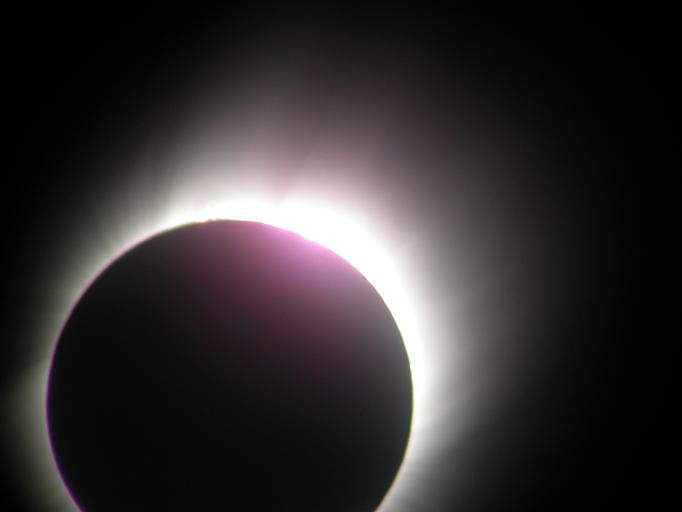A delegation of 90 members of the Astronomical Society is awaiting the eclipse in Shanghai where it will occur at nine thirty in the morning local time. Live on the San Francisco Exploratorium website

Six minutes and 39 seconds. This is the maximum duration of the longest solar eclipse in the 21st century (although there will be another one identical to it in 18 years and it will be seen at its best in Aswan in Egypt but not longer).
The event will begin at dawn on Wednesday, July 22 in the Gulf of Khambhat in India. The morning fishermen will experience a sunrise the likes of which they have not seen until today - instead of the familiar sun in the sky there will be a black hole surrounded by pale currents shooting along the sky. The sea-birds will cease to croak, not sure whether the day is beginning or not, when a strange shadow will cancel the sunrise that has begun and cause an unexpected cold.
Most defects last a few minutes. This time it is 6 minutes and 39 seconds, not much less than the theoretical maximum of seven and a half minutes. An identical eclipse is expected in about 18 years in Africa, and a longer eclipse will not take place until June 13, 2132. It is doubtful that any of the readers of these lines will get to see it.
From the Gulf of Khambhat the moon's shadow will run across India, China, and the Ryoku Islands of Japan. The route will pass by many large Arabs including Shanghai - the largest city in China, with 20 million inhabitants where it will be about six minutes long (those who want to see about six and a half minutes will have to go about 55 km to the south). Other major cities along the path of the total eclipse include Surat, Vadodara, Bhopal and Raranasi, Chengdu, Chongqing, Waham, Pai, Hangzhou, all of which are members of the million-plus club, making the eclipse the most visible in human history (and thus dwarfing the the 1999 eclipse that passed through many European cities).
In Shanghai, a group of no less than 90 members of the Israeli Astronomical Society are expecting the shadow of the moon, and many of those who stayed in Israel and experienced the four and a half minute long eclipse in Antalya in 2006 are jealous of them.
The eclipse is especially long thanks to a lucky coincidence of the orbits of the celestial bodies. In July, the Earth is closest to the farthest point from the Sun. A small sun means the moon can cover it for a longer time. At the same time, the moon is almost at its closest point to the earth. A large moon covers the sun for a longer time, and the combination of both makes the eclipse even longer.
The slow pace of the eclipse may have a strong effect on eyewitnesses. Solar eclipses were known to cause local people to start chasing them, spending thousands of dollars and flying tens of thousands of kilometers from home to experience the cold shadow of the moon hiding the sun and leaving only its pale atmosphere once more. Additional minutes of wonder will increase the effect considerably.
The San Francisco Exploratorium will broadcast the eclipse live.
More on the subject on the science website

7 תגובות
Another link to the live broadcast: http://www.likuy-live.tops.co.il/
How many years ahead?
The Maya in South America and the Babylonians calculated with great precision without the use of computers.
brave hedgehog,
Since the orbits of the sun, moon and earth are known to astronomers with great precision, it is not difficult to calculate this - of course with the help of computers.
I have to understand where scientists give such an exact date...
2123, is there also a month?
Sounds fascinating, thank you very much, father!
You killed me with laughter with the members of this expedition